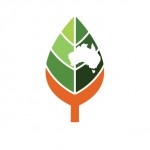This week Tim Thwaites has been talking on radio about the wiggly universe, baby’s breath, champagne, blind mice, fish sex, fat marmots, the Arctic Ocean, belly flopping frogs and more. [Read more…] about What Tim’s talking about on radio – 28 July
What Tim's talking about on radio – 28 July
This week Tim Thwaites has been talking on radio about the wiggly universe, baby’s breath, champagne, blind mice, fish sex, fat marmots, the Arctic Ocean, belly flopping frogs and more. [Read more…] about What Tim's talking about on radio – 28 July
What Tim’s talking about on radio – 21 July
This week Tim Thwaites has been talking on radio about geoengineering: [Read more…] about What Tim’s talking about on radio – 21 July
What Tim's talking about on radio – 21 July
This week Tim Thwaites has been talking on radio about geoengineering: [Read more…] about What Tim's talking about on radio – 21 July
What Tim’s talking about on radio – 13 July
Listen to Tim Thwaites every second Tuesday on Tony Delroy’s Nightlife, ABC Local Radio nationwide after the 11 pm news. See what he’s talking about this week.
[Read more…] about What Tim’s talking about on radio – 13 July
What Tim's talking about on radio – 13 July
Listen to Tim Thwaites every second Tuesday on Tony Delroy’s Nightlife, ABC Local Radio nationwide after the 11 pm news. See what he’s talking about this week.
[Read more…] about What Tim's talking about on radio – 13 July
Eight for apples, 46 for muffins and other chemistry stories
Eight for apples, 46 for muffins
Plants protect plants and triple yields in East Africa
Spinning the world clean
Thursday, 8 July 2010 at Chemistry for a Sustainable World, an international conference organised by RACI, the Royal Australian Chemical Institute. Speakers in Melbourne and available for interview. More info on all stories online. [Read more…] about Eight for apples, 46 for muffins and other chemistry stories
Locust plagues, feeding nine billion people and vegetable oil for your car, tractor and truck
Wednesday, 7 July 2010 at Chemistry for a Sustainable World, an international conference organised by RACI, the Royal Australian Chemical Institute. Speakers in Melbourne and available for interview. [Read more…] about Locust plagues, feeding nine billion people and vegetable oil for your car, tractor and truck
Weed fighting lawns, a new chick magnet, potato flakes for breakfast and is GM working for cotton growers?
Today at Tuesday, 6 July 2010 at Chemistry for a Sustainable World an international conference organised by RACI, the Royal Australian Chemical Institute. [Read more…] about Weed fighting lawns, a new chick magnet, potato flakes for breakfast and is GM working for cotton growers?
Monday's chemistry stories from RACI
 DNA fingerprinting in just two hours
DNA fingerprinting in just two hours
The plant whisperer – asking plants how they fight disease
New antibiotics on their way
We’re living 30 years longer with chemistry
Today’s stories from Chemistry for a Sustainable World, an international conference organised by RACI, the Royal Australian Chemical Institute. Details at www.scienceinpublic.com.au

